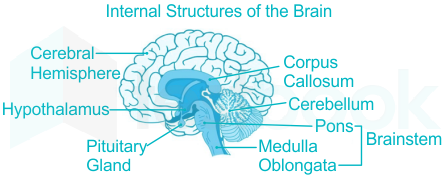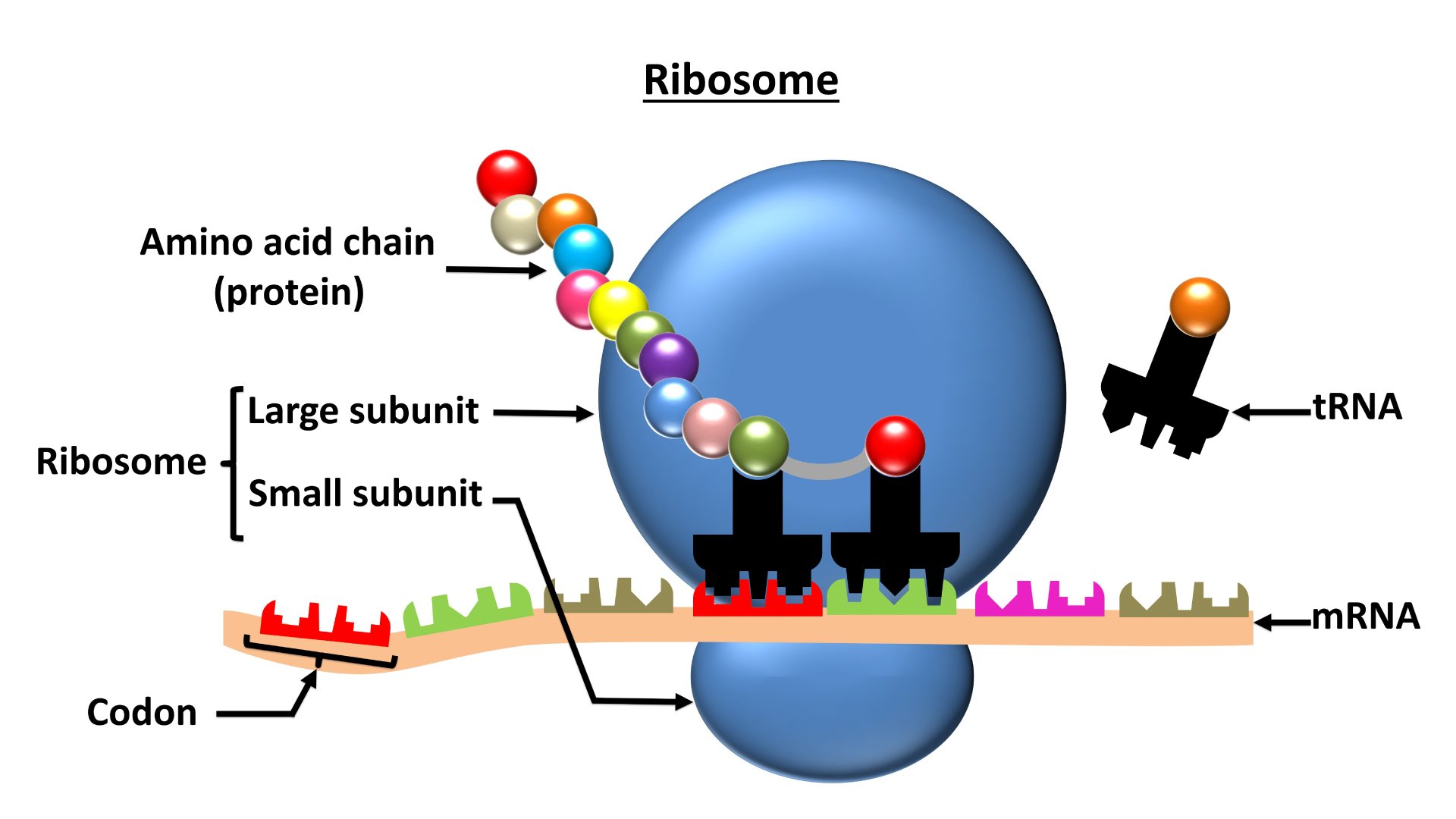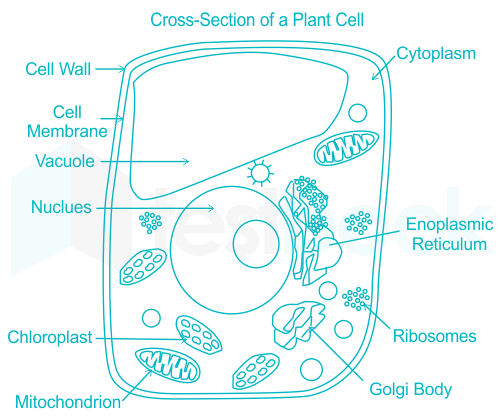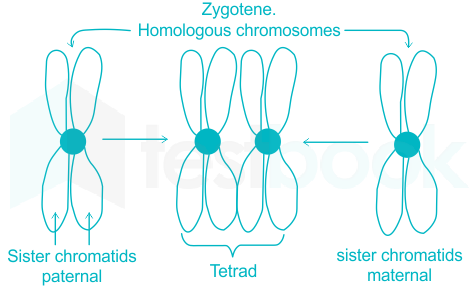Biology MCQ Quiz - Objective Question with Answer for Biology - Download Free PDF
Last updated on Dec 12, 2023
Latest Biology MCQ Objective Questions
Biology Question 1:
Which one of the features mentioned below about decomposers is not applicable to decomposers?
Answer (Detailed Solution Below)
Biology Question 1 Detailed Solution
The correct answer is They transfer energy to the next trophic level in the food chain.
 Important Points
Important Points
- Decomposers are organisms that break down dead or decaying organisms.
- They carry out the natural process of decomposition.
- Types of decomposers are bacteria and fungi.
- Decomposers eventually convert all the organic matter into carbon dioxide and nutrients like nitrogen, phosphorous, magnesium, etc.
- Organisms that feed on dead material in this way are called saprophytes or reducers.
Explanation:
- Trophic system refers to the system in which energy flows from one trophic level to another.
- Trophic level is the specific place in the food chain that is occupied by an organism based on their source of food.
- In a specific food chain, organisms occupy different trophic levels according to the sequence of who-eats-whom.
- The energy in an ecosystem flows from the Producer → Herbivore/Primary Consumer → Carnivore/Secondary consumer.
- Decomposers may act on organisms of all trophic levels.
- As they breakdown the organic matter into its nutrient forms, they do not transfer the energy to any other trophic level.
Biology Question 2:
What disease can we get by too much exposure to X-ray?
Answer (Detailed Solution Below)
Biology Question 2 Detailed Solution
The correct answer is Cancer.
 Key Points
Key Points
- X-rays are a known carcinogen.
- This means they can damage DNA and increase the risk of developing cancer, including leukemia, breast cancer, and skin cancer.
- The risk is higher for people who are exposed to high doses of radiation over a short period of time, or for people who are exposed to low doses of radiation over a long period of time.
- X-rays have much higher energy and much shorter wavelengths than ultraviolet light.
- X-rays have very small wavelengths, between 0.01 to 10 nanometers.
- The use of x-rays is checking for fractures (broken bones), chest x-rays can spot pneumonia. Mammograms use x-rays to look for breast cancer.
- X-rays were first observed and documented in 1895 by German scientist Wilhelm Conrad Roentgen.
- X-rays can be produced on Earth by sending a high-energy beam of electrons smashing into an atom-like copper or gallium.
- When the beam hits the atom, the electrons in the inner shell, called the s-shell, get jostled, and sometimes flung out of their orbit. Without that electron, or electrons, the atom becomes unstable, and so for the atom to "relax" or go back to equilibrium.
 Additional Information
Additional Information
- HIV/AIDS:
- HIV attacks your immune system, making it difficult to fight off infections.
- Unprotected sex, sharing needles, and mother-to-child transmission are common ways HIV spreads.
- Left untreated, HIV can progress to AIDS, a life-threatening condition.
- H1N1 flu:
- H1N1 flu is a highly contagious respiratory illness caused by the influenza A virus.
- Coughing and sneezing are the primary ways H1N1 flu spreads.
- Especially for young children, pregnant women, and those with underlying health conditions, H1N1 flu can have serious complications.
- Gonorrhea:
- Gonorrhea is a sexually transmitted infection caused by the Neisseria gonorrhoeae bacteria.
- It can infect the genitals, rectum, and throat, primarily spreading through unprotected sexual contact with an infected person.
- Gonorrhea can lead to serious complications like pelvic inflammatory disease (PID) and infertility in both men and women if left untreated.
Biology Question 3:
Part of the brain regulating temperature of body is:
Answer (Detailed Solution Below)
Biology Question 3 Detailed Solution
Concept:
- In animals, like humans brain is a vital organ.
- The brain is part of the Central Nervous System. It occupies the central region of the body.
- It is protected by a three-layer covering called meninges - Dura mater, Arachnoid mater and Pia mater.
- The brain is divided into the following three parts:
- Forebrain (Prosencephalon):
- Cerebrum
- Frontal lobe
- Parietal lobe
- Occipital lobe
- Temporal lobe
- Diencephalon
- Thalamus
- Hypothalamus
- Olfactory bulbs
- Midbrain (Mesencephalon):
- Corpora quadrigemina (Tectum)
- Tegmentum
- Hindbrain (Rhombencephalon):
- Pons varolii
- Medulla oblongata
- Cerebellum

Explanation:
Option 1: Hypothalamus - CORRECT
- Hypothalamus is located in the forebrain.
- Functions:
- Controls secretions of the anterior lobe of the pituitary gland.
- Synthesis of hormones
- Regulating body temperature
- Control of sexual behavior
- Regulate emotional responses
- Controls hunger, thirst and water balance, etc.
Option 2: Pituitary - INCORRECT
- The pituitary gland is located at the base of the brain. It is attached to the hypothalamus.
- Functions:
- The main function of the pituitary gland is to produce and release hormones such as FSH, GH, ACTH, etc.
- It is under the control of the hypothalamus.
Option 3: Medulla - INCORRECT
- The medulla oblongata is located in the hindbrain. It is located at a point where the brain and spinal cord connect.
- Functions:
- Controls heartbeats
- Controls breathing as well as blood pressure
Option 4: Cerebellum - INCORRECT
- The cerebellum is located in the hindbrain. It is referred to as the little brain.
- Functions:
- Controls voluntary movement like walking, posture, etc.
- Responsible for maintenance of balance.
So the correct answer is option 1 (Hypothalamus).
Biology Question 4:
sterility is caused due to the deficiency of which of the following Vitamins?
Answer (Detailed Solution Below)
Biology Question 4 Detailed Solution
The correct answer is E. Key Points
Key Points
- Sterility is a condition in which an individual is unable to conceive or produce offspring, and it can have various causes such as hormonal imbalances, infections, genetic disorders, and lifestyle factors.
- Vitamin E plays a crucial role in maintaining the reproductive system and preventing oxidative damage to the reproductive cells.
- Vitamin D is essential for the absorption of calcium and bone health, and its deficiency can lead to rickets, osteoporosis, and other bone-related disorders.
- Vitamin K is required for blood clotting and bone health, and its deficiency can lead to bleeding disorders and osteoporosis.
- Vitamin B1, also known as thiamine, is essential for carbohydrate metabolism, nerve function, and energy production, and its deficiency can lead to beriberi and other neurological disorders.
 Additional Information
Additional Information
- Vitamin E is a fat-soluble vitamin that is found in nuts, seeds, vegetable oils, and green leafy vegetables.
- It acts as an antioxidant and protects the cells from oxidative damage caused by free radicals.
- Vitamin D is synthesized in the skin when exposed to sunlight and is also found in fatty fish, egg yolks, and fortified foods such as milk and cereals.
- Vitamin K is found in green leafy vegetables, liver, and fermented foods such as cheese and natto.
- Vitamin B1 is found in whole grains, legumes, nuts, and meat.
- It is important to maintain a balanced and varied diet to ensure adequate intake of all essential vitamins and minerals.
Biology Question 5:
Which acid destroys the bacteria that enter the stomach?
Answer (Detailed Solution Below)
Biology Question 5 Detailed Solution
The correct answer is Hydrochloric acid.
 Key Points
Key Points
- Hydrochloric acid is the digestive fluid formed by the stomach during the process of digestion.
- It functions by destroying harmful microorganisms present in the food particles.
- The digestive system of the human body comprises a group of organs that work together in converting food into energy and other basic nutrients to power the body.
- The stomach serves as a muscular bag that is situated towards the left side of the abdominal cavity, beneath the diaphragm.
- This vital organ acts as a storage for the food and provides enough time to digest meals.
- The stomach also produces digestive enzymes and hydrochloric acid that maintains the process of digestion.
 Important Points
Important Points
- Digestion and absorption are the two main functions of the digestive system.
- Digestion is necessary for breaking down food particles into nutrients that are used by the body as an energy source, cell repair and growth.
- Food and drink need to be converted into smaller molecules of nutrients before it is absorbed by the blood and carried to the cells throughout the body.
- The body breaks the nutrients present in the drinks and food into carbohydrates, vitamins, fats and proteins.
 Additional InformationFormic acid
Additional InformationFormic acid
- Formic Acid is the common name of Methanoic Acid.
- Formic acid is the simplest carboxylic acid.
- Molecular Formula: HCOOH or CH2O2.
- Formic acid appears as a colourless liquid with a pungent odour.
- The word "formic" comes from the Latin word ‘formica’, meaning ant, referring to its early isolation by the distillation of ant bodies.
- In nature, formic acid is found in most ants and in stingless bees.
- Sulphuric acid is an oily liquid that is viscous in nature.
- Sulphuric acid is highly acidic.
- The chemical formula of this compound is H2SO4.
- it is used in the manufacture of batteries, detergents like trisodium phosphate, potato farming, printing ink, as a dehydrating agent, making paper, perfume, disinfectants, drugs etc.
- Nitric Acid is a strong acid with the chemical formula HNO3.
- It is also known as the spirit of niter and aqua fortis.
- In its pure form, it is colourless but as it gets older it turns into a yellow cast.
- This colour appears due to the decomposition of Nitric acid to oxides of nitrogen and water.
- It is highly corrosive and toxic.
- It causes severe skin burns.
- It can be manufactured by the catalytic oxidation of ammonia.
- It is a common reagent used in laboratories and an important chemical used in industries to manufacture explosives and fertilizers.
- The PH of Nitric acid is approximately 3.01.
Top Biology MCQ Objective Questions
Ribosomes are sites for
Answer (Detailed Solution Below)
Biology Question 6 Detailed Solution
Download Solution PDFThe correct answer is Protein synthesis.
 Key Points
Key Points
- Ribosomes are membranous granular structures present in the cytoplasm.
- They were first observed under an electron microscope as dense particles by George Palade in the year 1953.
- Ribosomes are the site for ''protein synthesis'' so they are also called the ''protein factory'' of the cell.
- There are two types of ribosomes
- Eukaryotic ribosomes - 80s - occurs in the cytoplasm of eukaryotic cell
- Prokaryotic ribosomes - 70s - occur in the cytoplasm as well as are associated with the cell membrane of prokaryotic cell.
- The subunits of the ribosomes are:
- 80s ribosomes - are made of 60s and 40s subunits.
- 70s ribosomes - are made of 50s and 30s subunits.
 Important Points
Important Points
- Composition of the structure of ribosome:
- They are composed of ribonucleic acid (RNA) and proteins
| Type | Composition |
| 70s | 60% rRNA + 40% proteins |
| 80s | 40% rRNA + 60% proteins |

 Additional Information
Additional Information
- Photosynthesis: It is the process by which green plants and some other organisms use sunlight to synthesize nutrients from carbon dioxide and water. In this process, plant the chlorophyll, carbon dioxide, water, sunlight, and release oxygen.
- Synthesis of Fatty acids occurs in the cytoplasm.
Among the following statements which is/are correct?
1. Plants convert energy from sunlight into food stored as carbohydrates
2. Plants have chlorophyll
3. Plant cells do not have cell walls
Answer (Detailed Solution Below)
Biology Question 7 Detailed Solution
Download Solution PDFConcept:
Photosynthesis:
- The leaves have a green pigment called chlorophyll.
- It helps leaves to capture the energy of the sunlight.
- This energy is used to synthesise (prepare) food from carbon dioxide and water. Since the synthesis of food occurs in the presence of sunlight, it is called photosynthesis.
In the presence of sunlight Carbon dioxide + water → Carbohydrate + oxygen.
- Some plants, green algae, and cyanobacteria can perform photosynthesis.
- The process of photosynthesis is commonly written as
6CO2 + 6H2O + Sun-Light → C6H12O6 + 6O2
Plant cells have a cell wall to protect them and make them rigid structure.
Explanation:
1. Plants convert energy from sunlight into food stored as carbohydrate’s - Correct
2. Plants have chlorophyll. - Correct
3. Plant cells do not have cell walls. - Incorrect.
 Additional Information
Additional Information
In the plant cells, there are different components and organelles for specific functions-

- Cell Wall – It is a rigid layer composed of cellulose. It is the outermost layer of the cell, below this cell membrane is present. The primary function of the cell wall is to protect and provide structural support to the cell.
- Cell Membrane – It is a semi-permeable membrane that helps in regulating and the substance for entry and exit inside and outside the cell.
- Nucleus – It is a vital part of the cell as it contains all the information or DNA of the cell and their heredity information for growth and cell division.
- Vacuole – Most of the part of the plant cell is occupied by the vacuole. It is surrounded by Tonoplast. The vital role of the vacuole is to provide support again the pressure of the cell wall.
- Golgi apparatus – They act as a transport system in the cell, as they transport various molecules to a different part of the cell.
- Ribosomes – They are the sites of protein synthesis, also termed as the protein factory of the cell.
- Mitochondrion – They break the complex molecules and produce energy and hence called the powerhouse of the cell.
- Lysosomes – They are termed suicidal bags as they hold the enzymes that are capable to digest the whole cell itself.
Which of the following organism breathes from skin?
Answer (Detailed Solution Below)
Biology Question 8 Detailed Solution
Download Solution PDFWhich juice secreted by the organs in the alimentary canal plays an important role in the digestion of fats?
Answer (Detailed Solution Below)
Biology Question 9 Detailed Solution
Download Solution PDFThe correct answer is Bile juice, Pancreatic juice.
 Key Points
Key Points
- Bile juice, Pancreatic juice secreted by the organs plays an important role in the digestion of fats.
- Bile juice is secreted by the liver.
- It does not contain any types of enzymes.
- The bile juice helps to make the food alkaline and break down the fat molecules.
- Pancreatic juice is secreted by the pancreas.
- It contains enzymes like amylase, trypsin, pancreatic lipase, nucleases, amylase, and lipase.
- Secretion of the Pancreatic juice is regulated by the hormones secretin and cholecystokinin.
- Lipase is the digestive enzyme of fat.
- Ptyalin is the digestive enzyme of the Saliva.
- Hydrochloric acid is produced naturally in the human stomach to help the digestion of food.
Which of the following aquatic animals does NOT have gills?
Answer (Detailed Solution Below)
Biology Question 10 Detailed Solution
Download Solution PDFThe correct answer is Whale.
 Key Points
Key Points
- Gills are respiratory organs found in most aquatic organisms.
- Gills can extract dissolved oxygen from water and excrete carbon dioxide.
- Gills can be found in Octopus, Squid, Clownfish, Tadpole, Prawn, etc.
- Lungs are the breathing organ of Whales.
 Additional InformationRespiratory organs of different Animals:
Additional InformationRespiratory organs of different Animals:
| Animal | Respiratory Organ |
|---|---|
| Earthworm | Skin. |
| Whale | Lungs |
| Spider, Scorpion | Booklungs. |
| Cockroach | Trachea. |
| Tadpole, Fish, Prawn | Gills |
| Frog | Skin, Lungs, Buccal cavity |
| Amphibians, mammals, and birds | Lungs. |
Which of the following organelles shows similarity to a prokaryotic cell?
Answer (Detailed Solution Below)
Biology Question 11 Detailed Solution
Download Solution PDF
Concept:
Theory of endosymbiosis
-
Symbiotic relationship, where one organism lives inside the other, is known as endosymbiosis.
-
The theory proposed that mitochondria and chloroplasts evolved from engulfed prokaryotes.
-
A large anaerobic bacteria engulfed an aerobic prokaryote, which then formed an endosymbiotic relationship with the host, gradually developing into a mitochondrion.
-
It is believed that chloroplasts originated from a cyanobacterial endosymbiont.

Explanation:
Similarities between Prokaryotic cells, Mitochondria, and Chloroplast:
-
Mitochondria and chloroplast are of the same size as prokaryotic cells.
-
Mitochondria and prokaryotic cells both have their own circular DNA.
-
The ribosome of bacteria, mitochondria, and chloroplasts have a 70S type of ribosome.
-
Divides by binary fission.
| Characters | Prokaryotic cell | Mitochondria | Chloroplast |
|---|---|---|---|
|
Extra Circular DNA |
present | present | present |
|
Ribosomes |
70s | 70s | 70s |
| Replication | Binary fission | Binary fission | Binary fission |
| Size | 1 to 10 micrometre | 1 to 10 micrometre | 1 to 10 micrometre |
| Appearance on earth | about 1.5 billion years ago | about 1.5 billion years ago | about 1.5 billion years ago |
| Electron transport system | Found in the plasma membrane of the cell | Found in the plasma membrane of mitochondria | Found in the plasma membrane of Chloroplast |
Which of the following helps in the blood clotting?
Answer (Detailed Solution Below)
Biology Question 12 Detailed Solution
Download Solution PDF- Vitamin K is a vitamin found in leafy green vegetables, broccoli, and Brussels sprouts.
- In the body, vitamin K plays a major role in blood clotting. So it is used to reverse the effects of “blood-thinning” medications when too much is given; to prevent clotting problems in newborns who don’t have enough vitamin K, and to treat bleeding caused by medications.
Tricks:
What is the cell wall of a plant made of ?
Answer (Detailed Solution Below)
Biology Question 13 Detailed Solution
Download Solution PDFThe correct answer is Cellulose.
- Plant cell walls are primarily made of cellulose.
 Key Points
Key Points
- Cellulose is the most abundant macromolecule on Earth.
- Cellulose fibers are long, linear polymers of hundreds of glucose molecules.
- These fibres aggregate into bundles of about 40, which are called microfibrils.
 Additional Information
Additional Information
- Carbohydrates are the sugars, starches, and fibres found in fruits, grains, vegetables, and milk products.
- A carbohydrate is a biomolecule consisting of carbon (C), hydrogen (H), and oxygen (O) atoms.
- Lipids are molecules that contain hydrocarbons and make up the building blocks of the structure and function of living cells.
- A lipid is a biomolecule that is soluble in nonpolar solvents.
- A lipoprotein is a biochemical assembly whose primary function is to transport hydrophobic lipid also known as fat molecules in water, as in blood plasma or other extracellular fluids.
- It consists of a Triglyceride and Cholesterol centre, surrounded by a phospholipid outer shell, with the hydrophilic portions oriented outward towards the surrounding water and lipophilic portions oriented inward toward the lipid centre.
The outer whorl is called the ________, and consists of the sepals.
Answer (Detailed Solution Below)
Biology Question 14 Detailed Solution
Download Solution PDFThe correct answer is Calyx.
 Key Points
Key Points
- Flowers contain the plant’s reproductive structures.
- A typical flower has four main parts - or whorls - known as the calyx, corolla, androecium, and gynoecium.
- The outermost whorl of the flower has green, leafy structures known as sepals.
- The sepals, collectively called the calyx, help to protect the unopened bud.
 Important Points
Important Points
- The second whorl is comprised of petals - usually, brightly coloured - collectively called the corolla.
- The number of sepals and petals varies depending on whether the plant is a monocot or dicot.
- In monocots, petals usually number three or multiples of three; in dicots, the number of petals is four or five, or multiples of four and five.
- Together, the calyx and corolla are known as the perianth.
- The third whorl contains the male reproductive structures and is known as the androecium.
- The androecium has stamens with anthers that contain the microsporangia.
- The innermost group of structures in the flower is the gynoecium, or the female reproductive component(s).
- The carpel is the individual unit of the gynoecium and has a stigma, style, and ovary.
- A flower may have one or multiple carpels.

In which stage of meiosis does synapsis take place?
Answer (Detailed Solution Below)
Biology Question 15 Detailed Solution
Download Solution PDFConcept:
- The cell is the basic unit of life. Life arises from pre-existing cells. Cells grow and multiply to form a diversity of life forms, this process of growth and multiplication of cells is called Cell Division.
- Cell division is of three types:
- Mitosis - Equational division, occurs in somatic (non-sex) cells
- Meiosis - Reducttional division, occurs in sex cells
- Amitosis - Direct type of division, occurs in prokaryotes
- Meiosis can be further divided into two stages - Meiosis I and Meiosis II
Explanation:
- Prophase I of Meiosis I has 5 sub-stages
- Leptotene, Zygotene, Pachytene, Diplotene, Diakinesis.
- The Zygotene stage is characterized by the pairing of homologous chromosomes called the ''Synapsis''
- The pairs of homologous chromosomes are called Bivalents.
- There develops a structure between the homologous chromosomes called the synaptonemal complex. It is a tripartite structure i.e. it is made up of 3 thick lines of DNA and protein.

 Additional Information
Additional Information
- Leptotene: During leptotene, the chromatin condenses to form the chromosomes. Chromosomes are the longest and thinnest in this stage.
- Pachytene: This stage is characterized by the occurrence of crossing over. Non-sister chromatids of the homologous chromosomes exchange their genetic parts.
- Metaphase I: The first metaphase of meiosis characterized by the alignment of paired chromosomes along the center (metaphase plate) of a cell, which ensures that two complete copies of chromosomes are present in the resulting two daughter cells of meiosis I.


